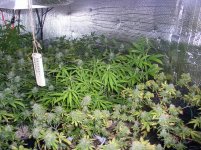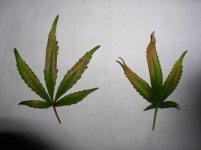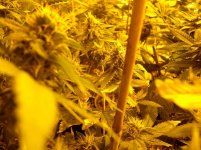Obi Wan Kenabis
New member
Kindman, that next to last pic looks almost identical to my last grow. I guess I need to do some environmental troubleshooting.
Trouble is, I don't know where to start.
My first crop in the grow cab was beautiful, and I can't think of any changes except addition of a wire rack on the bottom to hold the pots off the floor. The rack is a couple years old, so no paint outgasing.
The first crop in that cab was in grow bags sitting in Sterilite tubs.
I've just put some new clones in, they're starting to show the same symptoms.
THCforus, good luck to ya. I'll be watching this thread.
Trouble is, I don't know where to start.
My first crop in the grow cab was beautiful, and I can't think of any changes except addition of a wire rack on the bottom to hold the pots off the floor. The rack is a couple years old, so no paint outgasing.
The first crop in that cab was in grow bags sitting in Sterilite tubs.
I've just put some new clones in, they're starting to show the same symptoms.
THCforus, good luck to ya. I'll be watching this thread.




 Dutch
Dutch




